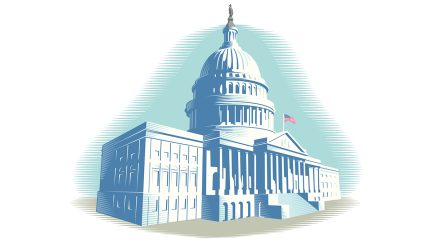For more stories like this, sign up for the PLANADVISERdash daily newsletter.
Advisers Prioritizing Roth Provisions From SECURE 2.0
According to Escalent research, advisers are more likely to focus on immediate or traditional plan provisions with sponsors.
The majority of plan advisers are intent on implementing provisions from the SECURE 2.0 Act of 2022 with plan sponsors, but their top areas of focus are more bread-and-butter implementations than the headline-grabbing innovations, according to the recent Retirement Plan Advisor Trends report from Cogent Syndicated and Escalent.
In a September 2023 survey of defined contribution plan advisers, the research firm found general enthusiasm for recommending SECURE 2.0 offerings to plan sponsors, but with a focus on areas that might be considered more administrative than innovations. The sampling of 503 advisers said they were extremely likely or already discussing with plan sponsor clients the following areas:
- Catch-up contribution to Roth accounts (now due in 2026) (67%);
- Roth account employer matching (56%);
- 529 college savings account rollovers (40%);
- Expanded penalty-free withdrawals (36%);
- Automatic rollovers amount increase (33%);
- In-plan emergency savings accounts (22%);
- No-fee emergency plan withdrawals (22%);
- Disaster relief withdrawals (21%);
- Student loan employer matching (20%); and
- Out-of-plan emergency savings accounts (20%).
Many advisers, according to Sonia Davis, a senior product director for Escalent, are focused on areas that can show real growth in participant saving.
“In general, there is a lot of excitement for SECURE 2.0’s behavioral plan design changes because, as you know, participants tend to be a little bit inertia prone,” says Davis. “Plan advisers really see this as encouraging participants to save more and offering greater flexibility.”
Davis does note relatively high enthusiasm among advisers for less traditional areas such as emergency savings accounts (22%) and student loan payment matching in 401(k) plans (20%). But those items tend to fall a little further down the list as advisers face challenges both in technical implementation and first-mover hesitancy.
“It will take some education and some convincing that it’s worth it and [it’s] going to help with overall participant engagement and employee retention,” Davis says. “Those are the kind of things that advisers need to be communicating.”
Patience Needed
Terri Fiedler, president of retirement services at Corebridge Financial, agreed that implementation of certain provisions will take time.
“Adoption timelines of the optional provisions will vary based on several factors, including the ease or complexity of the implementation, regulatory clarity and the potential value for the participant,” she says. “The plan sponsor’s market segment may also impact the pace of adoption.”
Fiedler pointed to two provisions newly in effect in 2024 related to emergency expenses that may take some time to be widely adopted. Section 115 allows for $1,000 per year to be accessed from retirement funds without penalty for emergencies, and Section 127 gives employers the option to offer a pension-linked emergency savings account.
“We believe that Section 115 will be the more immediate opportunity for plan sponsors,” she says. “Because most plans already allow emergency distributions, Section 115 is able to utilize existing withdrawal and administrative capabilities. This makes implementation and administration simpler than establishing a separate, employer-based emergency savings account, which is the case with Section 127.”
The IRS provided further guidance on emergency savings earlier this month.
Easier Implementation
Meanwhile, Fiedler notes that there are some provisions that are teed up for smoother implementation.
“Section 304, which increases the involuntary cash-out limit; Section 314, which provides penalty-free withdrawal in cases of domestic abuse; and Section 602 conforming 403(b) distribution rules to 401(k) rules [can] leverage past withdrawal and administrative capabilities,” she says. “This once again makes the implementation process simpler, potentially driving plan sponsor consideration in the near-term.”
2024 alone brings no less than 20 potential changes for plan advisers and sponsors, according to a roundup from Groom Law Group, Chartered.
Even with the many potential add-ons, Escalent’s Davis continues to see bread-and-butter automatic enrollment and auto-escalation aspects of SECURE 2.0 as crucial for increased retirement saving.
“From my seat at the table, having the automatic enrollment and auto-escalation will be huge to drive that initial engagement and keep people increasing their contributions,” she says.
She is also interested in tracking student loan matching.
“We hear a lot from participants who are struggling to pay back student loans while simultaneously saving for retirement,” she says. “But we also don’t want to see contribution levels take a hit. This alleviates some of that tension.”
Successful implementation will require continued discussion of the provisions among plan sponsors, recordkeepers, and plan advisers and consultants, Corebridge’s Fiedler notes.
“Together,” Fiedler says, “we can ensure the full scope and impact of all the available provisions are understood, make the best decisions for each particular plan, and educate employees on any plan updates so they are best-positioned to utilize the available benefits of SECURE 2.0 and take actions that improve their retirement outcomes.”You Might Also Like:

403(b) Plans Have Special Considerations When Complying with SECURE 2.0

Answering Questions About SECURE 2.0 Catch-Up Provisions





